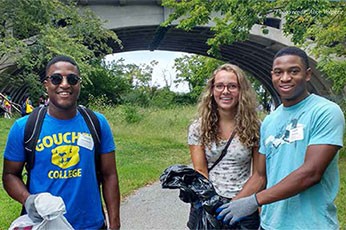



The Healthy Harbor Report Card for 2015 analyzes and reports on water quality data samples by Blue Water Baltimore both for the Harbor and further upstream, with funding for the sampling, analysis and report provided by the Abell Foundation and other partners.
The results are mixed but, overall, disappointing. Water health in Baltimore waterways continues to be very poor with the primary causes being fecal bacteria, nitrogen pollution, low water clarity and high conductivity in streams. However, water quality scores for turbidity, dissolved oxygen and phosphorous pollution all remained high or improved, resulting in the highest overall stream grade since the report card program began in 2013.
Much of Baltimore’s poor water quality is the result of storm-induced pollution problems. Untreated runoff carries trash and polluted stormwater into storm drains, which flow unfiltered into our streams and Harbor. High bacteria levels are due to storm-induced sewer overflows, leaking sewer pipes and chronic dry weather sewage discharges from the storm drain system. Global climate change models indicate that Baltimore will be subject to an increasing number of intense rain storms in the coming years, making it all the more important that we repair and upgrade our pipes and as soon as possible.
The findings of the Healthy Harbor Report Card underscore just how much work there is to do. Nobody said cleaning up the Baltimore Harbor would be easy and it will take time for all of the hard work we are doing today to show results, but if we make the next four years about fixing our gray infrastructure, installing green infrastructure, and giving more people the opportunity to experience our urban waterways and advocate for them, we can still have a swimmable Harbor by 2020.